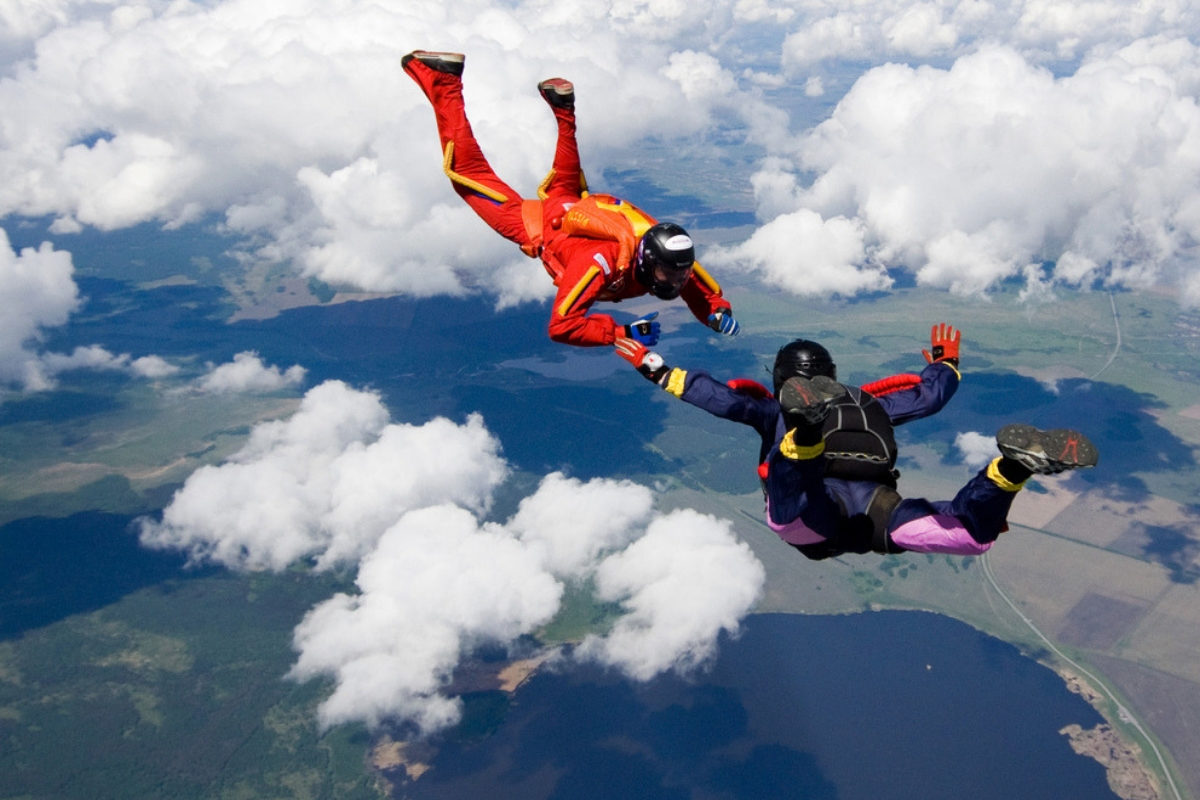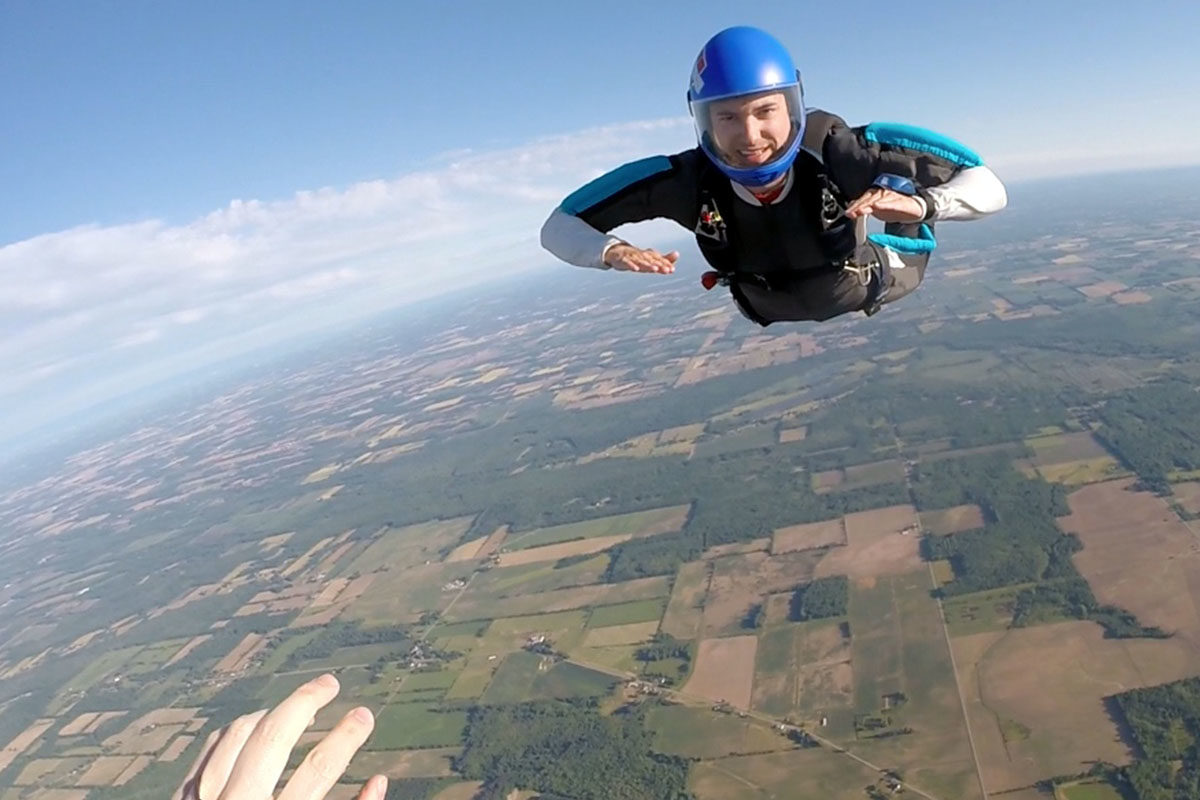People often ask, “Is learning to skydive hard?” And honestly, learning to skydive has never been easier! Well…it’s never been more accessible. Learning to skydive takes a true desire to learn the sport and a significant commitment of time and money. So, is learning to skydive super easy? Not exactly. But is it totally doable and rewarding? Heck yes!
Simply put, to get your first skydiving certification at WNY you’ll complete two tandem skydives (levels 1 & 2), take the first jump course and parachute packing class, go through our Accelerated Freefall (AFF) program, and then complete some coach jumps. Once you’ve achieved all of the United States Parachute Association (USPA) requirements you’ll be awarded your ‘A’ skydiving license!

What is the AFF program?
There are two common ways to begin your skydiving training journey: static line or instructor-assisted deployment (IAD), and AFF. Here, we use the AFF program. AFF teaches you the skills needed to safely proceed through a jump, from loading the airplane to freefall, canopy flight, and landing. As skydivers say, AFF is essentially the process of teaching you how to save your own life.
You will begin by jumping solo while two instructors hold onto you, then one instructor, and finally with an instructor just falling with you and not holding on. Once you’re off AFF status and able to learn from and jump with coaches, the fun really begins! Coach jumps will make up the remainder of your jumps until you’re licensed. AFF teaches you to safely jump solo, and coach jumps teach you how to safely jump with others.
What comes after the A license?
You’ve got your A license, now what? There are three more licenses you can (and should!) achieve: B, C, and D. Each of them comes with their own perks and requirements.
– A: You’ve successfully demonstrated you can be trusted in the sky and safely jump with others. You can now jump unsupervised (without an instructor or coach watching) … meaning you can jump with your buds!
– B: You’ve got to have a minimum of 50 skydives to get your B License, and once you have 100 jumps you’re eligible to become a coach! Helicopter jumps, night jumps, and hot air balloon jumps (ah!) are all able to be completed once you’re B-licensed.
– C: You get to participate in demo-jumps into events, like festivals and ball games! C-license holders show an extremely precise accuracy in landing and must have at least 200 jumps. At 500 jumps, you can work towards your instructor rating. The recommended jump number to start wearing a camera by the USPA is 200 jumps, so basically, it’s time to add “GoPro” to your wish list! At 200 jumps you can also start learning to fly a wingsuit.
– D: You must have a minimum of 500 jumps. You’re able to work toward pro and tandem ratings (tandem instructors are super experienced!) and have completed at least 100 formation jumps. By the time you have your D License, you’ve not only demonstrated your commitment to safety and accuracy, but also to passionate pursuit of safely progressing in the sport.

What if AFF is just not my jam?
Hang in there! The learning curve in skydiving is different for everyone. Some people may be naturals in freefall and faceplant their landings, while others may stick their landings from day one but have zero awareness during freefall. Remember that it is normal to have things that you strive to work on, in fact, we hope you do! The important thing is to remember that even the best skydivers in the world all started at square one and that your time spent being a student is something you’ll look back on and cherish. Don’t be too hard on yourself!
Indoor Skydiving
Wind tunnels (indoor skydiving) are the absolute best and most efficient place to practice freefall skills, other than the actual sky. A perk of the wind tunnel is that you don’t have to think about the other important parts of the jump, like exiting the airplane or landing a canopy. They allow you to be watched closely by someone who is a master at freefalling and can tweak little things to make you a more well-rounded, confident, and safer skydiver. If you’re struggling with any freefall skills, a few minutes in the tunnel can be magic!
Once you do your first tandem, we’re confident you’ll catch the sky bug. If you find yourself looking up and thinking “I wish I could do that again, the sky looks extra blue today!” Then it’s time to get your First Jump Course on and learn to skydive!





